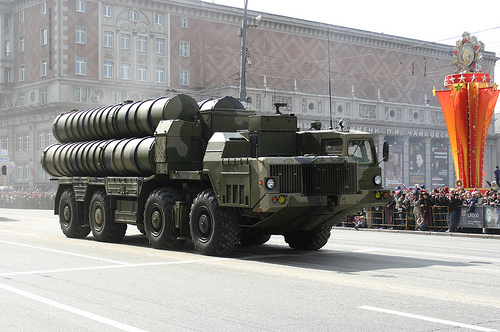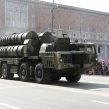
Lurching Toward Militarization: Russian Defense Spending in the Coming Decade
Publication: Eurasia Daily Monitor Volume: 8 Issue: 3
By:

New trends in Russian defense spending signal a return towards militarization. In the past decade, defense spending increased from 141 billion rubles to 2,025 trillion rubles without leading to a growth in deliveries, as these figures were consumed by rising costs for modernizing old models and for new models as well as losses due to corruption (Vedomosti, August 19, 2010). Meanwhile, the Russian defense ministry has already submitted to the government a ten year plan for arms procurement and re-equipment for the next decade. This is an exceptionally ambitious military building program. Rather than modernize the armed forces by 10 percent annually to 2020 as previously planned, President Dmitry Medvedev now demands that 30 percent of the armed forces weaponry should be modernized by 2015 (RIA Novosti, May 24, 2010).
The original State Armament Program from 2011-2020 allocated only 13 trillion rubles ($425 billion) to rearm the armed forces. Protests from the defense ministry prevailed upon the government during the summer of 2010 to raise the figure to 20 trillion rubles ($620 billion). Under these revised figures spending on research and development (R&D) and procurement will exceed $50 billion annually. Perhaps more importantly, total Russian defense spending may reach 4-5 percent of GDP, more than any other major power and a sign of creeping militarization. Finance Minister, Alexei Kudrin, recently conceded that budgetary outlays on national defense would rise in 2010 by 13.3 percent, while spending on national security and law enforcement would increase by 8.8 percent. The overall rise in those sectors through 2013 will be 22.1 percent. Since spending on healthcare, culture, cinematography, and education are also going up by large amounts general state expenditures will supposedly fall by 4.5 percent allegedly through attrition of the number of bureaucrats by 20 percent through 2013, reducing the rise of administrative costs, and privatizations (Interfax, July 28, 2010).
Thus, by 2013 Russian defense spending will be 2 trillion rubles ($65 billion) more than it is today and rise by 60 percent relative to 2010 figures. Moreover, these sums will go largely to nuclear, naval and air forces. Indeed the budget through 2013 raises procurement by 50 percent above the earlier figures (RIA Novosti, July 30, 2010). Obviously, lucrative and productive investment will be squeezed in the coming budgets, as is already the case, this drastic increase in state spending occurs when the budget faced a deficit of 5 percent of GDP in 2010 and 4 percent in 2011. Yet, the government is now pushing a forecast calling for real annual growth of 3-6 percent annually until 2015. Like many other governments, it is painting a rosy scenario that is likely to prove too optimistic. Prime Minister, Vladimir Putin, claims that by 2020 the armed forces will receive over 1,500 new aircraft and helicopters and around 200 new air defense systems (ITAR-TASS, July 19, 2010).
Yet, these promises are being made in an environment where there has been no reform since 2007 or such reforms as have been attempted failed and the government admits that the procurement plan for 2009 was only 50 percent completed, according to the Accounting Chamber (Pravda, July 21, 2010). The new plan calls for 1,300 new pieces of hardware, 213 of which require new producing facilities or modernization of existing ones. Equally, 1,000 new technologies should be worked out under the program (ITAR-TASS, August 22, 2010). Thus, to meet the demands for procurement until 2013 that have now been accepted, the government must find 270 billion rubles ($8.8 billion): more than originally intended (60 billion rubles, $1.9 billion) for procurement until 2013. Furthermore, Medvedev’s reform efforts have, by his own admission, fallen flat. So, these forecasts and promises should represent to unbiased observers a Russian version of what former US President, George H.W. Bush, called “voodoo economics.”
More recently, the extent of this militarization has become clearer. Medvedev still insists that defense spending will stay at 2.8 percent of GDP to 2020 even though this meant cutting other programs (RIA Novosti, November 25, 2010). The State Armament Program submitted to Medvedev and the Duma for 2011-20 now totals 20.7 trillion rubles ($646 billion) of which 19.4 trillion rubles ($634 billion) is earmarked for the defense ministry. Of this figure, 79 percent will be spent on the acquisition and purchase of high-tech armaments (including nuclear weapons which remain a priority). This represents a tripling of the current 2006-15 program that supposedly provides for the delivery of 1,300 models of equipment and armament, among which 220 require modernization or the creation of new capacities (Interfax, December 13, 2010; RIA Novosti, December 8, 2010; ITAR-TASS, December 13, 2010; RBK Online, December 14, 2010).
Within this new program that also entails the comprehensive modernization of the entire machine tool sector along with the high-tech sector, the state order (Goszakaz) for 2011 will rise by one third to 1.5 trillion rubles ($49 billion) and then another third by 2013 to 2 trillion rubles ($65 billion) (RIA Novosti Online, December 8, 2010). By 2013, national defense expenditure will have risen 64.4 percent, while the annual budget deficit moves from 4.3 percent of GDP to 5.3 percent of GDP (if current estimates hold). In other words, this defense spending will generate inflationary pressure while also coming at the expense of healthcare, education, and environmental protection, financial assistance to the regions, housing, and presumably also infrastructure (Izvestiya, November 12, 2010). Indeed, it appears that not only did Kudrin complain that the financial sources had not yet been assessed sufficiently and that such spending may lead to a burden on the economy, it transpired that this overall spending plan (which includes large-scale hikes on social welfare programs) was prepared in secret from Kudrin, a typical Tsarist or even Stalinist ploy. Indeed, inflation is already projected at 8.5 percent and will likely grow in 2011 vitiating all these plans (Moskovsky Komsomolets, December 3, 2010). Worse still, the iniquitous mobilization reserves of the Soviet period apparently still exist though nobody is saying how large they are.
Therefore, at a time when Russia desperately needs productive infrastructural, scientific and environmental investment, it is turning in exactly the same direction as its Soviet predecessor. Moreover, it is doing so in the absence of any reform in the hidebound defense industrial sector that is an admitted swamp of corruption. The navy alone is supposed to receive one third of this 19.4 trillion rubles. And, the whole rickety program is based on the rosiest of scenarios. When the next armaments program is drawn up it will be worthwhile looking at this new one and its predecessors, all of which failed, and speculating on what Russia could have otherwise achieved for the same money.




